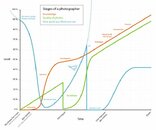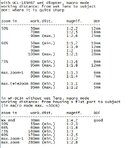I don't think there is any one perfect system for everyone. All are compromises. All we can do is pick the one that best matches our own values. Here's a rough general view:
Cost: A good DSLR setup will cost $5000 and up. A smaller M43 system will cost $1500-3500. A compact system using a point and shoot will cost from $500-2000. These are of course rough numbers, but give the general idea. If I were picking a system, I would look at my budget first, and how much I would use it over it's limited life. If you dive every day, the answer might be different than if you dive once a year. For the infrequent diver who has expensive tastes, it might make more sense to rent a state of the art system as needed.
Image Quality: In competent hands, the DSLR system can give the best image quality, M43 second, compact third. But I said competent hands. The skill of the photographer is more important than the equipment. Most of the quality is up to you. If you look at the pictures here on Scubaboard, you will see great photos from a wide range of equipment. As always, it depends more on your skill than the gear. So read the manual, practice practice practice, and learn from your experiences.
Size: DSLR will be big and heavy, taking up a large suitcase or more. An M43 system will be half that size but still a load. Compact systems can be quite small, easily fit in a carry on bag. Would I want to travel by air with it (then size and weight matter more)? If you don't take your rig because it's big and heavy, it really does not matter how good it is.
Obsolescence: Regardless of what system you choose, you should expect that something much better will be available in 2-3 years for larger systems, and in 1 year for compacts. Keep that in mind when you make investments in your system.
The questions to ask depend on what's important to you, but that's a start. That's just a top of the head opinion, but my point is there is probably no one right answer for today, and if there were it would be different in a few months. All we can do is pick a good compromise that matches our values today, and then enjoy shooting with it for as long as it suits.
Notice that I have not said one word about macro or wide angle. If you look at the pictures posted here, you will see that people can shoot good macro with all of the current better cameras. We have an embarrassment of riches, so many good choices. I think that's why it can be befuddling.
_______________________________
I can make a specific suggestion for the G11 in Canon Housing.
Macro: The G11 will only close focus wide, and what you want is close focus at longer focal lengths so you can back off from the subject. To do that, you need one or two wet macro lenses, but the Canon housing won't directly mount them. Use an M67 adapter for it, and some wet macro lenses.
Wider: There are several light weight wide angle wet lenses that can be mounted on the available adapters for the Canon DC34 case, but look at these two: the high quality Dyron 14mm ($500 with adapter), and the less expensive Fantasea Bigeye ($220 for dedicated version #5135 or $300 for M67 version #5137 with M67 adapter). I have the 5135, and it acts like about a .7x converter, while the Dyron 14mm is said to be a .5x converter. Try one of those to extend the use of your existing setup.
Note: The Dyron 14mm M67 lens needs an M67 adapter (see below), while the Fantasea has two versions, one with built in adapter for the Canon DC34 Housing (#5135), and one with M67 threads that needs an M67 adapter but allows use of M67 macro lenses too (#5137).
Dyron:
http://www.bluewaterphotostore.com/dyron-14mm-dome
Fantasea:
http://www.helixcamera.com/UW/fantasea/access/5137.html
You can easily make an M67 adapter yourself if you are handy, by drilling a 67mm step ring:
You can buy an M67 adapter from several sources: Dyron, FIX, Deeproof, and Fantasea.






